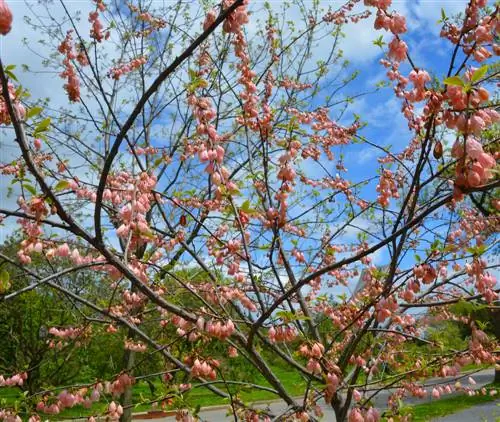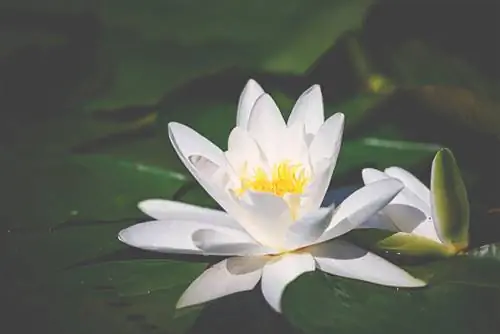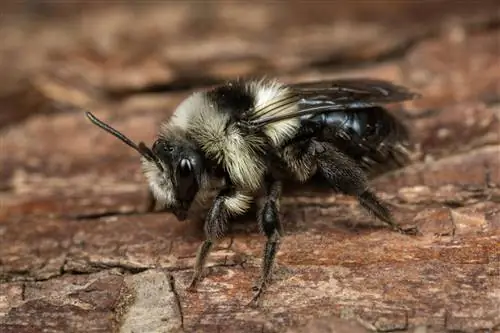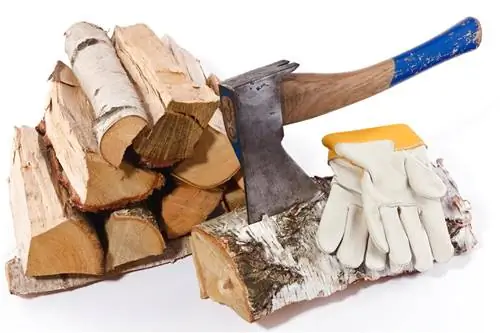- Author admin [email protected].
- Public 2023-12-16 16:46.
- Last modified 2025-01-23 11:21.
There are many beautiful garden trees - which were previously planted primarily because of their symbolic meaning. The oak tree stood for qualities such as truthfulness and strength, the linden tree stood for justice and love, ginkgo and pine stood for a long life, the cherry stood for joy of life and birch trees were once said to drive away evil spirits. Today, however, trees are more likely to be planted for other reasons, for example to provide shade for seats in the garden, as a design element or simply because the garden owner likes them so much.
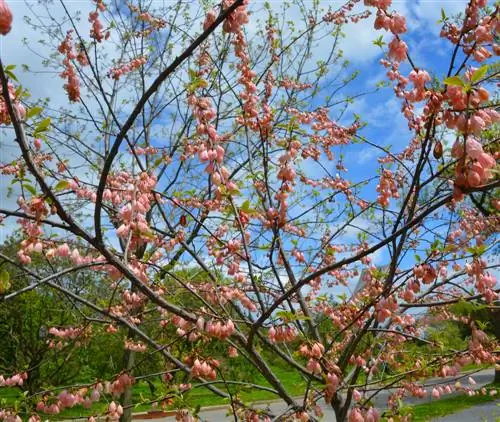
Which tree is suitable for my garden?
When choosing a garden tree, location, size of the garden and growth habit should be taken into account. Small deciduous or coniferous trees such as ornamental fruit, manna ash, Japanese red pine or dwarf cork fir are recommended for small gardens. Large gardens offer space for impressive deciduous or coniferous trees such as walnut, lime, spruce or fir.
Tips for choosing and garden design
However, you should not only choose your garden tree based on criteria such as beauty and personal taste, because then a nasty surprise might be waiting for you in a few years: trees need a suitable location so that they can grow and thrive he althily, In addition, depending on the type and variety, more or less space. So for small gardens you shouldn't necessarily choose a cherry tree, an oak or a spruce. Here you can choose between many small or narrow varieties that do not threaten to take up any space and therefore have to be shortened or even felled at some point.
Deciduous trees
If you want to plant a deciduous tree, you can choose between countless species and varieties. Fruit trees are not only beautiful, but also great to eat. These are available in different sizes and growth forms, so that there is the right apple or cherry tree for every garden. But there is also a large selection of ornamental trees.
Deciduous trees for large gardens
If you have a lot of space, you can of course put an impressive deciduous tree in your garden. The walnut tree (Juglans regia) is one such tree that can grow up to 30 meters high and develops a very wide, spreading crown. In earlier times the species was a popular, shady courtyard tree. A linden tree (Tilia), a beech (Fagus), a maple (Acer), a birch (Betula) or a chestnut (Aesculus) are also impressive. The individual species have different shapes that provide variety - for example through a special flower or bark color.
Deciduous trees for small gardens
Nowadays, however, most gardens are quite small, so that a huge deciduous tree doesn't fit in - especially since most people have neighbors right next door who often don't like such impressive garden decorations because of the shadows they cast. Dwarf or ornamental fruit types fit well into small gardens and also delight in spring with their lavish white or pink flowers. But small trees such as the manna ash (Fraxinus ornus), magnolia (Magnolia), snowdrop tree (Halesia carolina) or witch hazel (Hamamelis intermedia) are also planted primarily because of their beautiful flowers.
Conifers
In contrast to many deciduous trees, conifers, with the exception of larch, are evergreen. Their leaves are typically needle-shaped, often pointed, and the growth habit is strict with a naturally well-articulated structure. Conifers are extremely versatile: depending on the type and variety, they are suitable for solitary as well as group planting, and are perfect hedges for privacy and wind protection as well as for designing garden spaces. Feel free to plant different species with different heights, growth habits and needle colors - in the right location you won't have much work with this planting.
Conifers for large gardens
Large, impressive species such as spruce (Picea), fir (Abies), cedar (Cedrus), some pine species (Pinus), Douglas fir (Pseudotsuga menziesii) and larch (Larix) are suitable only in very large gardens with a lot of distance from the neighbors. These conifers should not be planted in a normal-sized garden as they can grow to more than 20 meters tall within a few years. In addition, their growth cannot be limited by cutting measures, on the contrary: cutting the tip can have dire consequences. You should definitely pay attention to good soil quality and sufficient planting distance so that the trees stay he althy for as long as possible.
Conifers for small gardens
In small gardens, small pine species such as the Japanese red pine (Pinus densiflora 'Umbraculifera'), the blue maiden pine (Pinus parviflora) or the dwarf white pine (Pinus strobus 'Radiata') have proven successful. The European yew (Taxus baccata) often thrives in the shade and can be used as a topiary and hedge. Other beautiful conifers for small gardens include the Western arborvitae (Thuja occidentalis), many types of juniper (Juniperus) and dwarf firs such as the dwarf cork fir (Abies lasiocarpa 'Compacta') or the Korean fir (Abies koreana).
Unusual garden trees
Fruit trees, spruce, fir, juniper If you are looking for unusual garden trees, you can choose between these species, among others:
- Chinese bluebell tree (Paulownia tomentosa)
- Gingko or fan leaf tree (Ginkgo biloba)
- Katsura tree (Cercidiphyllum japonicum), also called cake or gingerbread tree
- Plane tree (Platanus x acerifolia)
- Handkerchief tree (Davidia involucrata), also called pigeon tree
- Tulip tree (Liriodendron tulipifera)
Many hanging or mourning forms such as silver birches, weeping willows, etc. are also interesting and unusual.
Tip
If it doesn't necessarily have to be a house tree, plant a large shrub - for example a rhododendron, lilac or a serviceberry.

